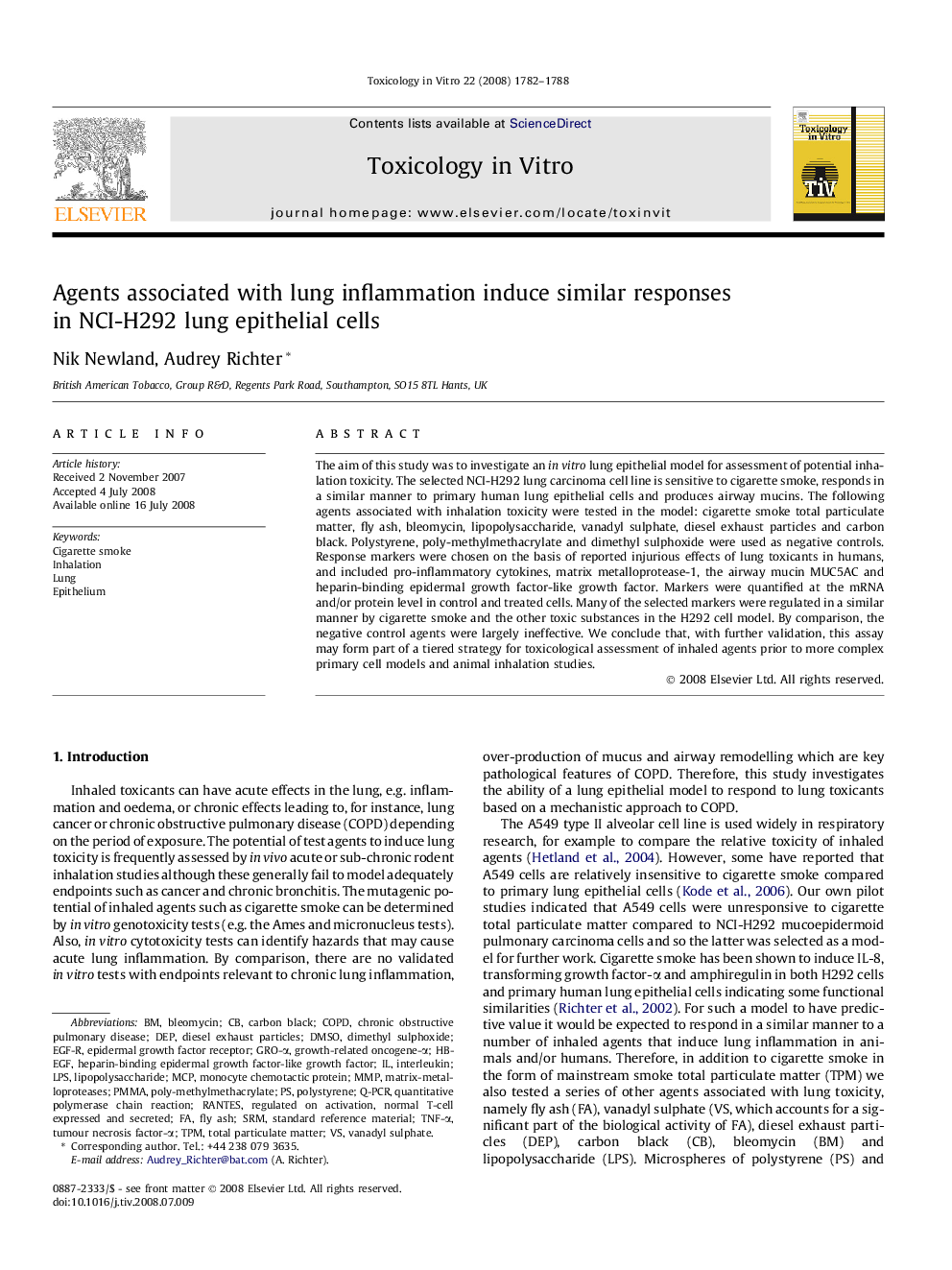| Article ID | Journal | Published Year | Pages | File Type |
|---|---|---|---|---|
| 2603753 | Toxicology in Vitro | 2008 | 7 Pages |
The aim of this study was to investigate an in vitro lung epithelial model for assessment of potential inhalation toxicity. The selected NCI-H292 lung carcinoma cell line is sensitive to cigarette smoke, responds in a similar manner to primary human lung epithelial cells and produces airway mucins. The following agents associated with inhalation toxicity were tested in the model: cigarette smoke total particulate matter, fly ash, bleomycin, lipopolysaccharide, vanadyl sulphate, diesel exhaust particles and carbon black. Polystyrene, poly-methylmethacrylate and dimethyl sulphoxide were used as negative controls. Response markers were chosen on the basis of reported injurious effects of lung toxicants in humans, and included pro-inflammatory cytokines, matrix metalloprotease-1, the airway mucin MUC5AC and heparin-binding epidermal growth factor-like growth factor. Markers were quantified at the mRNA and/or protein level in control and treated cells. Many of the selected markers were regulated in a similar manner by cigarette smoke and the other toxic substances in the H292 cell model. By comparison, the negative control agents were largely ineffective. We conclude that, with further validation, this assay may form part of a tiered strategy for toxicological assessment of inhaled agents prior to more complex primary cell models and animal inhalation studies.
